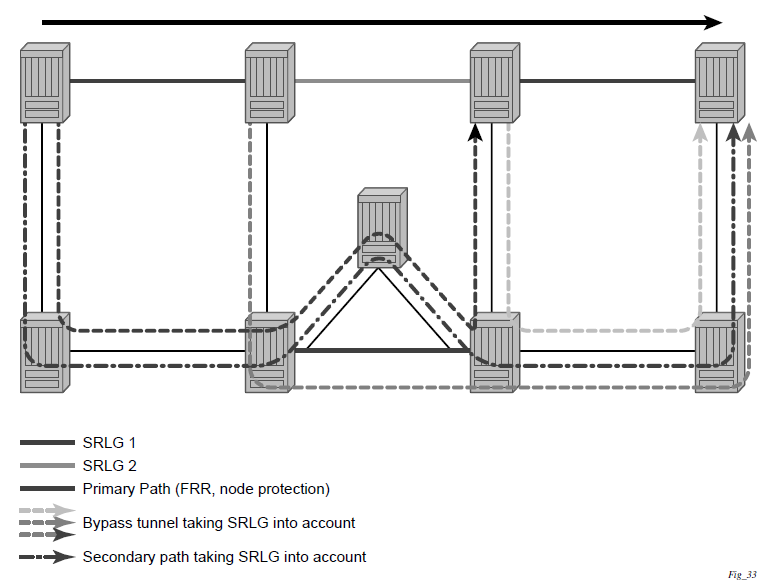The following details the steps necessary to create shared risk link groups:
For primary/standby SRLG disjoint configuration:
Create an SRLG-group similar to admin groups.
Link the SRLG-group to MPLS interfaces.
Configure primary and secondary LSP paths and enable SRLG on the secondary LSP path.
Note:The SRLG secondary LSP paths will always perform a strict CSPF query; the srlg-frr command is irrelevant in this case. For more information, see srlg-frr.
For FRR detours/bypass SRLG disjoint configuration:
Create an SRLG group, similar to admin groups.
Link the SRLG group to MPLS interfaces.
Enable the srlg-frr (strict/non-strict) option, which is a system-wide parameter, and it force every LSP path CSPF calculation, to take the configured SRLG memberships (and propagated through the IGP opaque-te-database) into account.
Configure primary FRR (one-to-one/facility) LSP paths. Consider that each PLR will create a detour/bypass that will only avoid the SRLG memberships configured on the primary LSP path egress interface. In a one-to-one case, detour-detour merging is out of the control of the PLR, therefore the latter will not ensure that its detour will be prohibited to merge with a colliding one. For facility bypass, with the presence of several bypass type to bind to, the following priority rules will be followed:
Manual bypass disjoint
Manual bypass non-disjoint (eligible only if srlg-frr is non-strict)
Dynamic disjoint
Dynamic non-disjoint (eligible only if srlg-frr is non-strict)
Non-CSPF manual bypass is not considered.
The following figure shows a typical application of the SRLG feature is to provide for an automatic placement of secondary backup LSPs or FRR bypass/detour LSPs that minimizes the probability of fate sharing with the path of the primary LSP.
Figure: Shared Risk Link Groups
This feature is supported on OSPF and IS-IS interfaces on which RSVP is enabled.